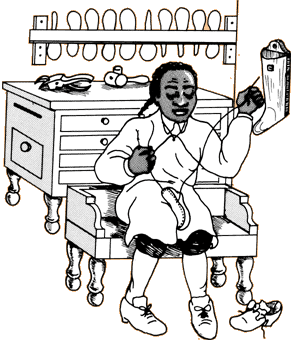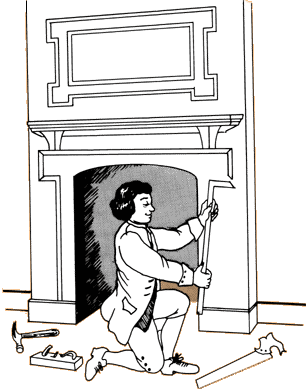ACTIVITY
(as a class)
Have an Eighteenth-Century Job Fair! You and a partner must choose one of the 18th-century jobs listed on this page. Find out all you can about that job -- tools used, clothes worn, and so on. Create a (job) table to tell other people how your person spends his/her workday. At your table include pictures you've drawn of your person at work and possibly objects that he/she produced. Share your knowledge about your 18th-century job with classmates who "visit" your table.
18th-Century Jobs
Blacksmith - makes objects out of iron.
Carpenter - builds and repairs wooden structures.
Coachman - drives a carriage.
Cook - prepares food.
Cooper - makes wooden barrels and other containers.
Gardener - tends a plot of land with flowers, vegetables, or fruit.
Housemaid - carries out housekeeping tasks.
Laborer - plants and harvests the crops; does other manual labor.
Manservant - takes care of a master's personal needs.
Milliner - sells fine imported clothing and house- hold items; also, makes or sells women's hats.
Shoemaker - makes and repairs shoes.
Silversmith - makes and repairs objects of silver.
Stabler - takes care of horses, cows, and other animals kept in a stable.
Waiter - serves the food in the plantation house.
Wigmaker - makes wigs; also is a barber.
MORE
If you lived in the 18th century, which of these jobs would you have wanted? Take a class vote.
  |


